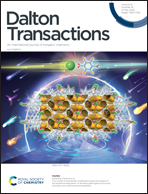ZIF-67-derived nanoframes as efficient bifunctional catalysts for overall water splitting in alkaline medium†
Abstract
In order to lower energy consumption it is critical to develop highly efficient and stable non-precious metal bifunctional catalysts. In this study, we found that rational design of novel nanostructures is able to increase the number of active sites, conductivity and accelerate electron transfer, thus promoting enhanced performance of the catalyst. We successfully synthesized carbon nanotubes (CNTs) containing a hollow polyhedral (CNTHPs) structure through annealing, etching and phosphating. The unique hollow shape not only provides a stable structure but also facilitates mass and charge transfer. Thus, CoP/CNTHPs can catalyze the hydrogen and oxygen evolution reactions effectively with overpotentials of 147 and 238 mV at 10 mA cm−2. Simultaneously, CoP/CNTHPs only needs a voltage of 1.54 V to attain a current density of 10 mA cm−2 in the electrocatalytic water splitting process, demonstrating its bifunctional activity. Furthermore, the electrolytic catalytic performance does not weaken significantly after 12 hours of electrolysis, demonstrating excellent stability. Overall, this research offers useful insights into rational design of high-performance non-noble metal catalysts.



 Please wait while we load your content...
Please wait while we load your content...